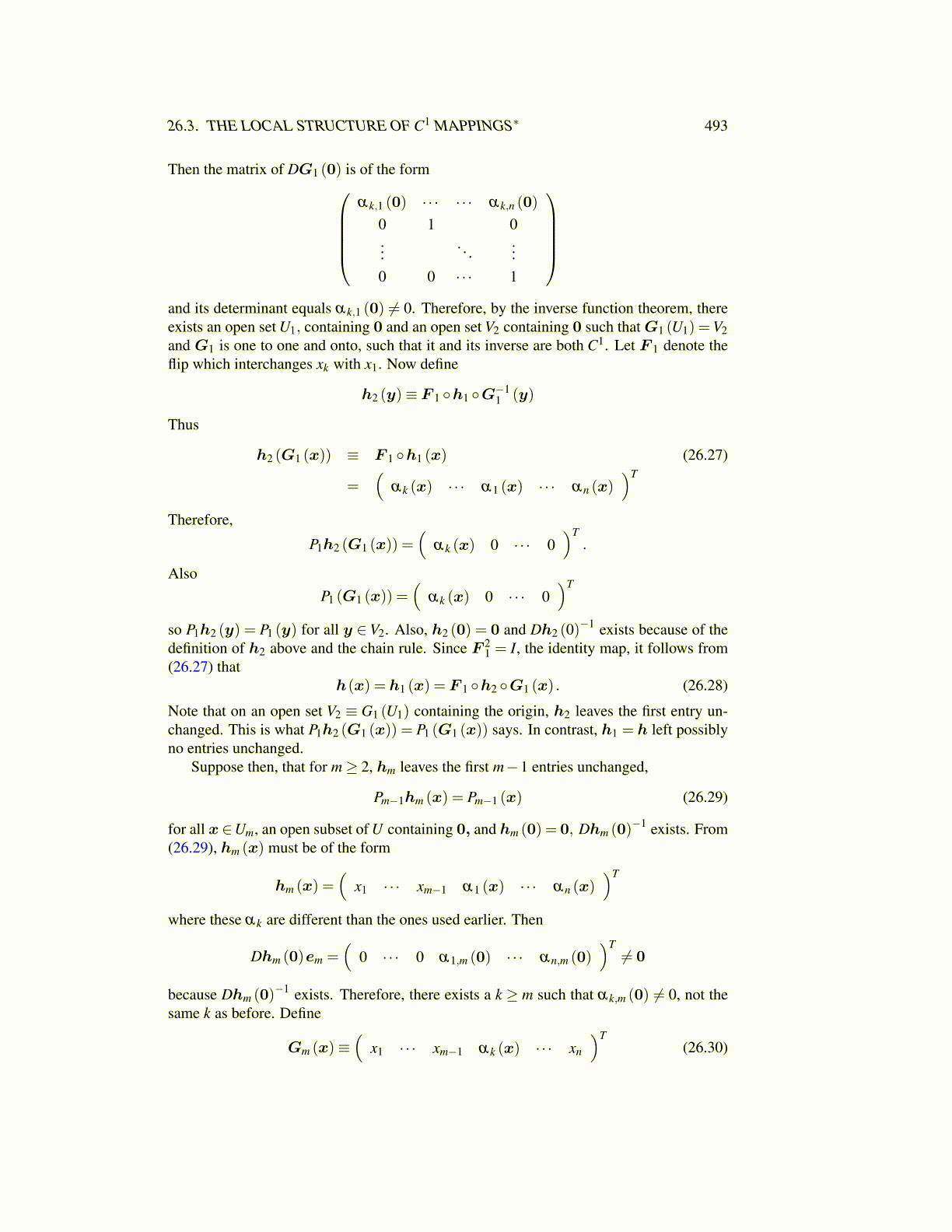
26.3. THE LOCAL STRUCTURE OF C1 MAPPINGS∗ 493
Then the matrix of DG1 (0) is of the formαk,1 (0) · · · · · · αk,n (0)
0 1 0...
. . ....
0 0 · · · 1
and its determinant equals αk,1 (0) ̸= 0. Therefore, by the inverse function theorem, thereexists an open set U1, containing 0 and an open set V2 containing 0 such that G1 (U1) =V2and G1 is one to one and onto, such that it and its inverse are both C1. Let F 1 denote theflip which interchanges xk with x1. Now define
h2 (y)≡ F 1 ◦h1 ◦G−11 (y)
Thus
h2 (G1 (x)) ≡ F 1 ◦h1 (x) (26.27)
=(
αk (x) · · · α1 (x) · · · αn (x))T
Therefore,
P1h2 (G1 (x)) =(
αk (x) 0 · · · 0)T
.
AlsoP1 (G1 (x)) =
(αk (x) 0 · · · 0
)T
so P1h2 (y) = P1 (y) for all y ∈V2. Also, h2 (0) = 0 and Dh2 (0)−1 exists because of the
definition of h2 above and the chain rule. Since F 21 = I, the identity map, it follows from
(26.27) thath(x) = h1 (x) = F 1 ◦h2 ◦G1 (x) . (26.28)
Note that on an open set V2 ≡ G1 (U1) containing the origin, h2 leaves the first entry un-changed. This is what P1h2 (G1 (x)) = P1 (G1 (x)) says. In contrast, h1 = h left possiblyno entries unchanged.
Suppose then, that for m≥ 2, hm leaves the first m−1 entries unchanged,
Pm−1hm (x) = Pm−1 (x) (26.29)
for all x ∈Um, an open subset of U containing 0, and hm (0) = 0, Dhm (0)−1 exists. From(26.29), hm (x) must be of the form
hm (x) =(
x1 · · · xm−1 α1 (x) · · · αn (x))T
where these αk are different than the ones used earlier. Then
Dhm (0)em =(
0 · · · 0 α1,m (0) · · · αn,m (0))T̸= 0
because Dhm (0)−1 exists. Therefore, there exists a k ≥ m such that αk,m (0) ̸= 0, not thesame k as before. Define
Gm (x)≡(
x1 · · · xm−1 αk (x) · · · xn
)T(26.30)